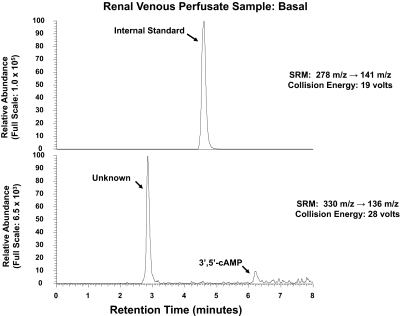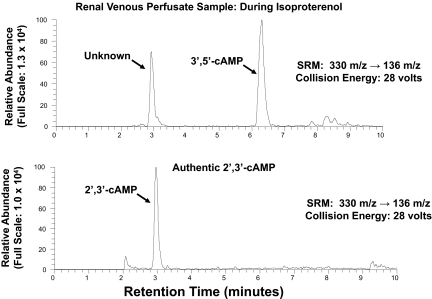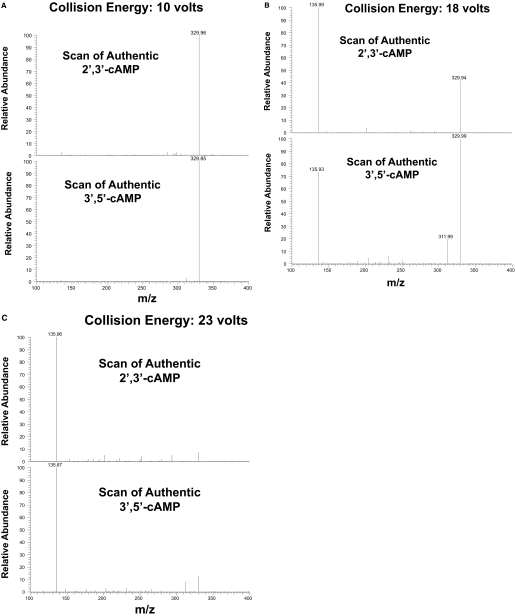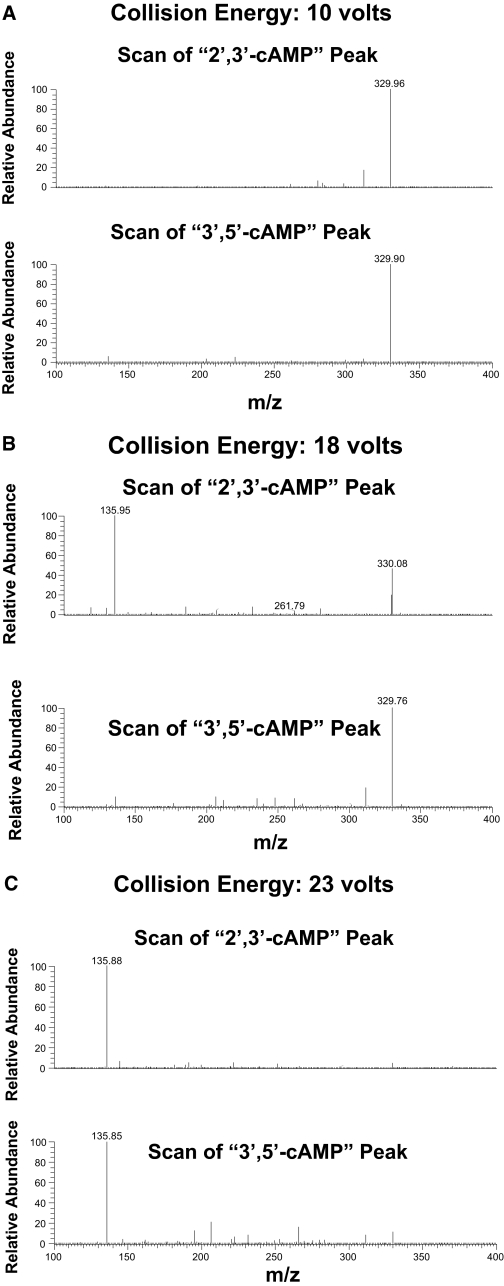In the above article [Ren J, Zaichuan M, Stewart NA, and Jackson E (2009) J Pharmacol Exp Ther 328:855–865], Figs. 1, 2, 3, 4, 5 were of poor resolution in the printed issue. The online versions were not affected. The enhanced figures and their legends appear below.
Fig. 1.
LC-MS/MS SRM chromatogram of renal venous perfusate obtained from untreated, isolated, and perfused SHR kidney. Two transitions were monitored: 278 → 141 m/z for the internal standard (top), which was 13C10-adenosine; and 330 → 136 m/z for endogenous 3′,5′-cAMP (bottom). Note the prominent peak with a retention time of approximately 2.9 min (bottom), which was much too short to be 3′,5′-cAMP, which has a retention time of approximately 6.3 min.
Fig. 2.
Figure illustrates a chromatogram of renal venous perfusate obtained from the same kidney as in Fig. 1 but during the administration of isoproterenol (1 μM). Two transitions were monitored: 278 → 141 m/z for the internal standard (top), which was 13C10-adenosine; and 330 → 136 m/z for endogenous 3′,5′-cAMP (bottom). Comparing with Fig. 1, note the marked increase in the area of the peak corresponding to 3′,5′-cAMP (6.3 min), whereas the area of the unknown peak (2.9 min) was little changed.
Fig. 3.
Figure illustrates a chromatogram of a renal venous sample (top) versus authentic 2′,3′-cAMP (bottom). The same transition was monitored in each panel: 330 → 136 m/z for endogenous 3′,5′-cAMP. Note that authentic 2′,3′-cAMP had a retention time precisely that of the unknown substance.
Fig. 4.
A to C, mass spectrum of authentic 2′,3′-cAMP and 3′,5′-cAMP at different levels of collision energy (10, 18, and 23 V, respectively).
Fig. 5.
A to C, mass spectrum of the putative 2′,3′-cAMP peak and 3′,5′-cAMP peak at different levels of collision energy (10, 18, and 23 V, respectively).
The printer regrets this error and apologizes for any confusion or inconvenience it may have caused.







